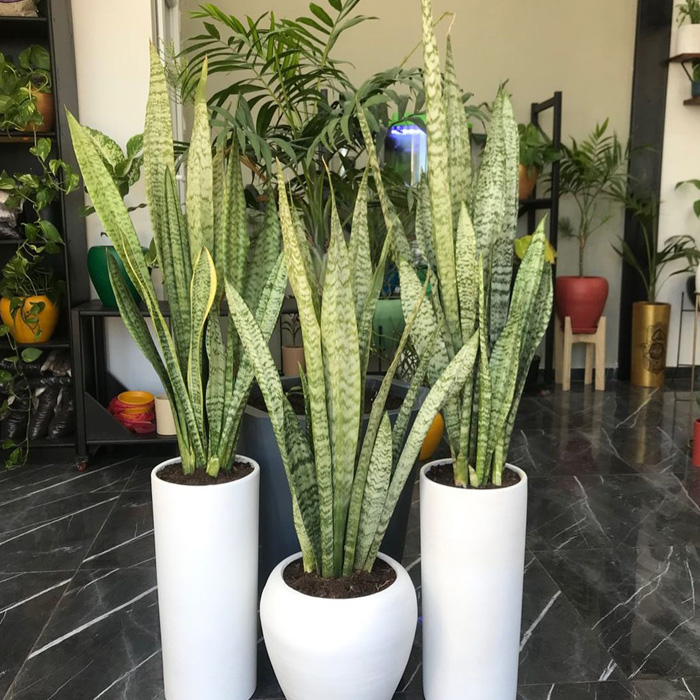Are snake plants toxic to cats: Unveiling the Truth about Snake Plants
Are snake plants toxic to cats: discover the untold story of snake plants! How does this green beauty affect your beloved feline companions?
Picture this: a cozy living room adorned with vibrant greenery, creating a serene and inviting atmosphere. Indoor plants have become increasingly popular, not only for their aesthetic appeal but also for their numerous health benefits. One such plant that has captured the hearts of many plant enthusiasts is the snake plant, also known as Sansevieria. However, concerns have arisen about the potential toxicity of snake plants for our beloved feline friends. Let’s delve into the world of snake plants and separate fact from fiction when it comes to their safety around cats.
Understanding Snake Plants
Snake plants are visually striking houseplants that stand tall with sword-like leaves, giving them a unique and elegant appearance. They come in various varieties, each with its own distinct shape, size, and pattern. The most common varieties include the Sansevieria trifasciata (also known as Mother-in-law’s tongue), Sansevieria laurentii, and Sansevieria cylindrica.
Aside from their attractive appearance, snake plants boast air-purifying properties. They efficiently absorb toxins from the air, converting carbon dioxide into oxygen during the night, making them an excellent choice for improving indoor air quality.
The Truth about Snake Plant Toxicity
Before jumping to conclusions, it’s crucial to address the concerns regarding snake plant toxicity for cats. While it’s true that snake plants contain certain compounds that can be toxic to our feline companions, it’s essential to understand the degree of danger involved. Snake plants are classified as mildly toxic to cats.
The primary toxic component found in snake plants is saponin, a compound that can cause symptoms such as nausea, vomiting, and diarrhea if ingested in large quantities. However, it’s important to note that snake plant toxicity is rarely fatal for cats, and severe reactions are quite rare.
Signs and Symptoms in Cats
It’s natural to be concerned about the signs and symptoms your cat might experience if they nibble on a snake plant. The good news is that most cats usually only exhibit mild digestive upset as a result of chewing on snake plants. These symptoms typically include drooling, upset stomach, or mild vomiting.
However, in rare cases where a cat ingests a considerable amount of the plant or demonstrates severe reactions, it’s crucial to seek immediate veterinary care. The veterinarian will be able to determine the best course of action and offer appropriate treatment.
Preventing Accidental Intoxication
Prevention is always better than cure, especially when it comes to our pets’ safety. Taking steps to ensure that your curious feline friend doesn’t come into contact with your snake plants will help avoid any potential issues. Here are some practical strategies:
1. Place your snake plants in high or inaccessible locations to avoid easy access for your cat. Hanging baskets or tall plant stands are excellent options.
2. Use deterrents such as bitter-tasting sprays or motion-activated alarms to discourage your cat from approaching the plants.
3. Designate a ‘pet-free’ zone in your home, where you can safely display more toxic plants, including snake plants, without worrying about your cat’s well-being.
4. Consider alternative pet-safe plants that are aesthetically pleasing and provide similar benefits. Spider plants, Boston ferns, or African violets are excellent choices.
Handling Snake Plants if You Have Cats
Even with preventive measures in place, accidents can still happen. If you need to handle snake plants or tend to them regularly, it’s important to take a few precautions:

1. Wear gloves to protect yourself from potential allergic reactions or skin irritations that some individuals may experience when handling snake plants.
2. After handling any plants, including snake plants, always remember to wash your hands thoroughly with soap and water. This simple step will remove any residue that could potentially harm your cat if they come into contact with your skin.
Additional Safety Considerations
While it’s common to focus on snake plant toxicity, it’s essential not to overlook the potential dangers posed by other houseplants in your cat-friendly home. Some common plants, such as lilies, philodendrons, and aloe vera, can be highly toxic to cats. Educate yourself about these plants and take necessary precautions, such as keeping them securely out of reach or avoiding them altogether if you have a mischievous and curious feline companion.
Conclusion
Snake plants can undoubtedly transform any indoor space into a green oasis while improving air quality. As responsible pet owners, it’s important to strike a balance between creating an inviting environment and ensuring our cats’ safety. By understanding the mild toxicity of snake plants and taking preventative measures, we can enjoy the beauty of indoor greenery without compromising our feline friends’ well-being. Remember, always be cautious, do your research, and consult with a veterinarian if you have any concerns. Together, we can embrace the harmony of nature while keeping our cats safe and happy.





